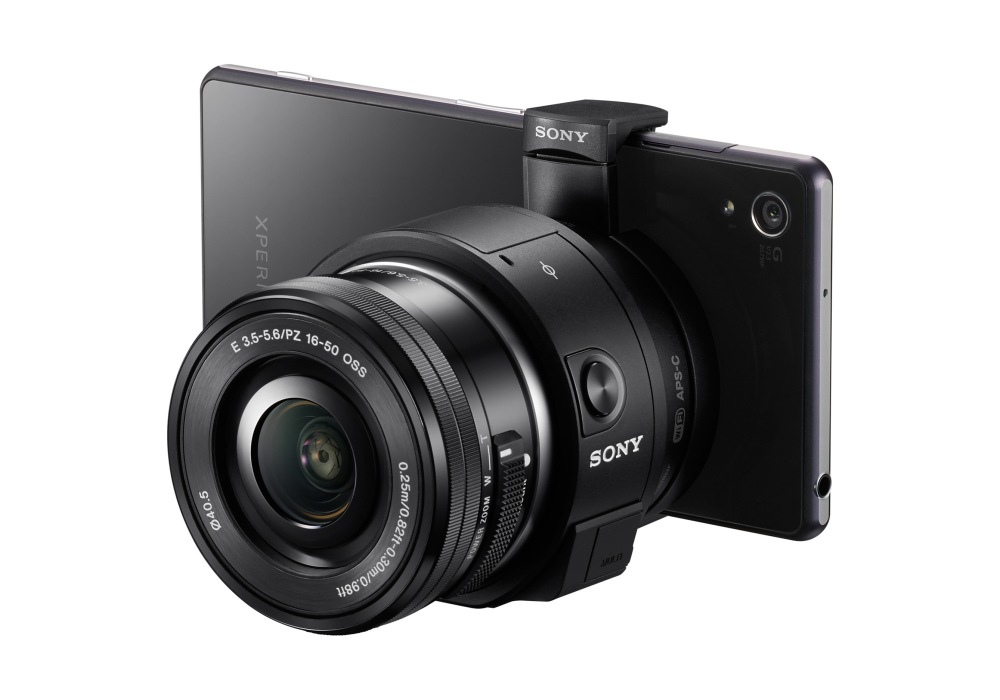Camera Phones or Lens Cameras?
So photography is going mobile, and what’s your weapon of choice? We all know that the mobile phone’s camera is just too small to support quality imaging in low light, so what’s your plan? Since Christmas is round the corner would you want a DSLR, or would you consider something simpler, like maybe a lens camera? The Lens Camera, a camera system pioneered by Sony with its QX series didn’t quite shine as brightly as people thought. But the concept was a hit and there are so many pretenders from China emulating the lens camera that sells for as little as 100 bucks online. However if you want the real deal here are three to consider.
DxO One
DXO One Taking a cue from the Olympus Air, the DxO One is the lens camera that is built especially for the iPhone as it uses a dedicated lightning connector to bridge its control and imaging capabilities. The cost of DxO One cost in the ballpark of US$600. Sensor size is as small as the Nikon System 1, probably smaller is good but not the sensor. With 20 megapixels at your disposal, the iPhone 6s won’t be a competitor. DxO captures both RAW and JPGs so it will be a useful fit. Unfortunately it does not support 4K video capture.
Aside from this, connectivity is only through the lighting port for iPhones only. Sounds like a dumb idea but hey, Android devices are already hitting the 16-20 megapixel output mark and the only brand that needs a camera upgrade comes from Apple.
Olympus Air Lens Camera
Retailing in the ball park of about US$400 with a 14-42 kit lens, this baby is really a m4/3 camera that takes in any m4/3 lens. That means the sensor size of this baby is 16 megapixels but with a much larger sensor than that found on the DxO.
By now, you’d realize that there is a heck of a lot of great lenses on the Olympus Air since it shares the same mount as the ones used by its mirrorless cousins. You have a wide choice of lens, including pancake type fixed lenses so there is no mistaking the quality you’d be getting from it.
The m4/3 platform has a lot of supporters, including lens mounts to use Leica lenses. So if you have an M mount lense, just get an adaptor for the m4/3 and you’re ready to go.
The downside is that video capture is restricted to 1080p so it’s no big deal here. Works for both iOS and Android.
Sony ILCE-QX1L 
Sony was the pioneer but sine the Q1, they have asserted that what you need is really an E-mount camera lens that will take in all of Sony’s NEX camera lenses. Sensor size is APS-C, so this is one big baby with 1080p video capture. The lenses are not as compact of small as m4/3 but big sensors need big lenses. Again, you can buy lens mount adaptors to fit Leica M lenses if you so desire so this won’t pose a huge problem should you want a jump in imaging quality. This QX1 cost in the ballpark of US$550.
Photography is Mobile
In the age of the budget airline, you are encouraged to travel light. Gone are the days where you pack a whole bag of lenses along with the DSLR with a tripod in tow. Having a modular lens camera is really the way forward as you only need a small bag to contain three lenses along with a Gorrilapod tripod for those low light moments.
Image quality is subjective as it really depends on you, the user. If you are happy with the quality after checking out those images posted up on Flickr, then you’d be quite satisfied with the money you are parting with.
Video capture is still stuck in the 1080p era but that’s not a bad thing is it? Those wanting 4K output would be better off shooting with the Galaxy S6 stock camera…instead of a lens camera.
The lens camera is centered around still photography and for those looking for something affordable without compromising their E mount, M mount or m4/3 mounted lenses, your choices are all here.
The Lens Camera habitually co-exist with your mobile device, without it, photography would be meaningless as you can’t perform image compositions. This is probably one gadget that will grow in years to come as people ditch their hefty DSLRs for something smaller to carry about.
Digital imaging and digital photography will in time get even cheaper and those with their foot in the door with a Lens Camera will be ahead of those without a similar product.


